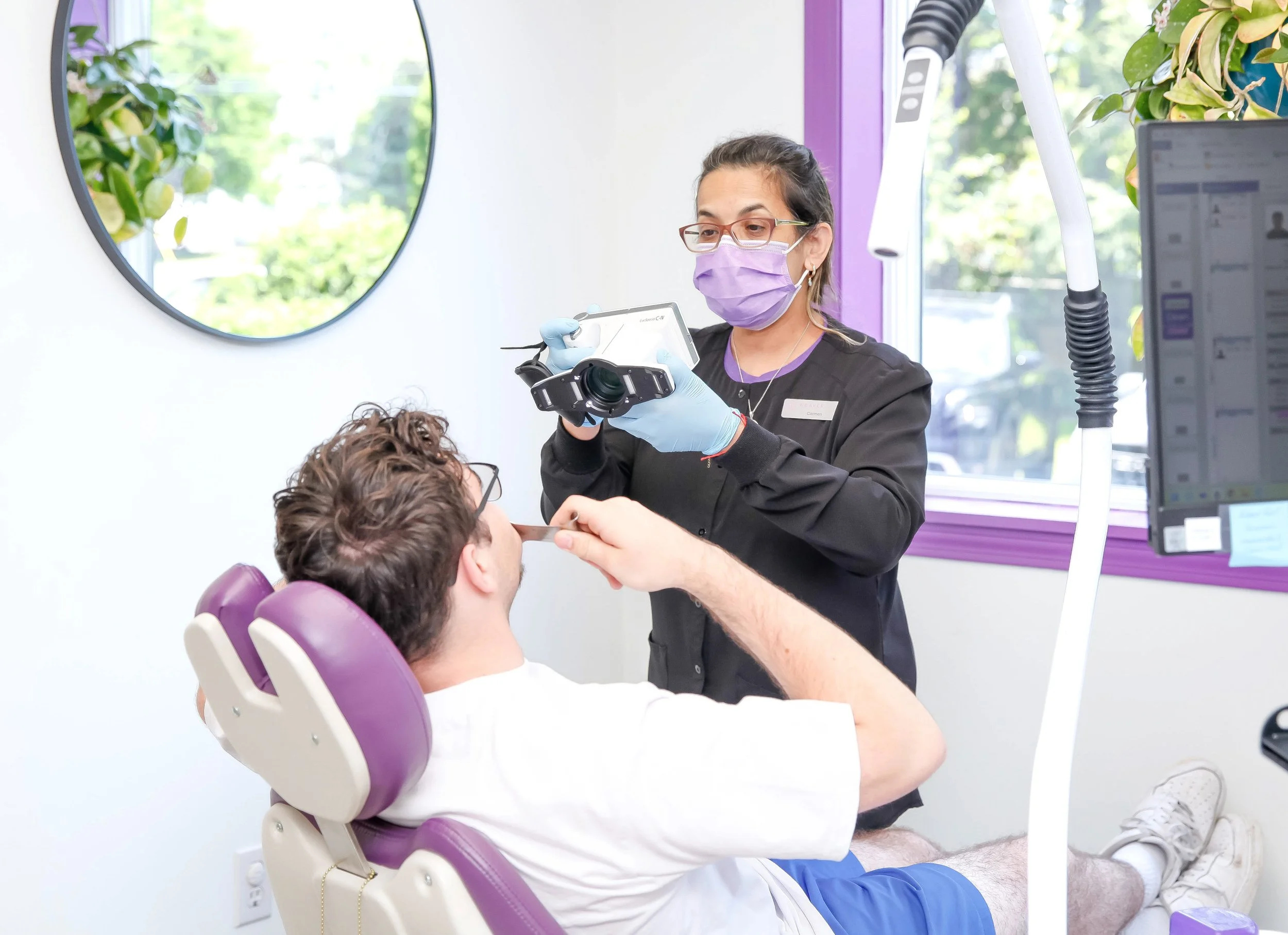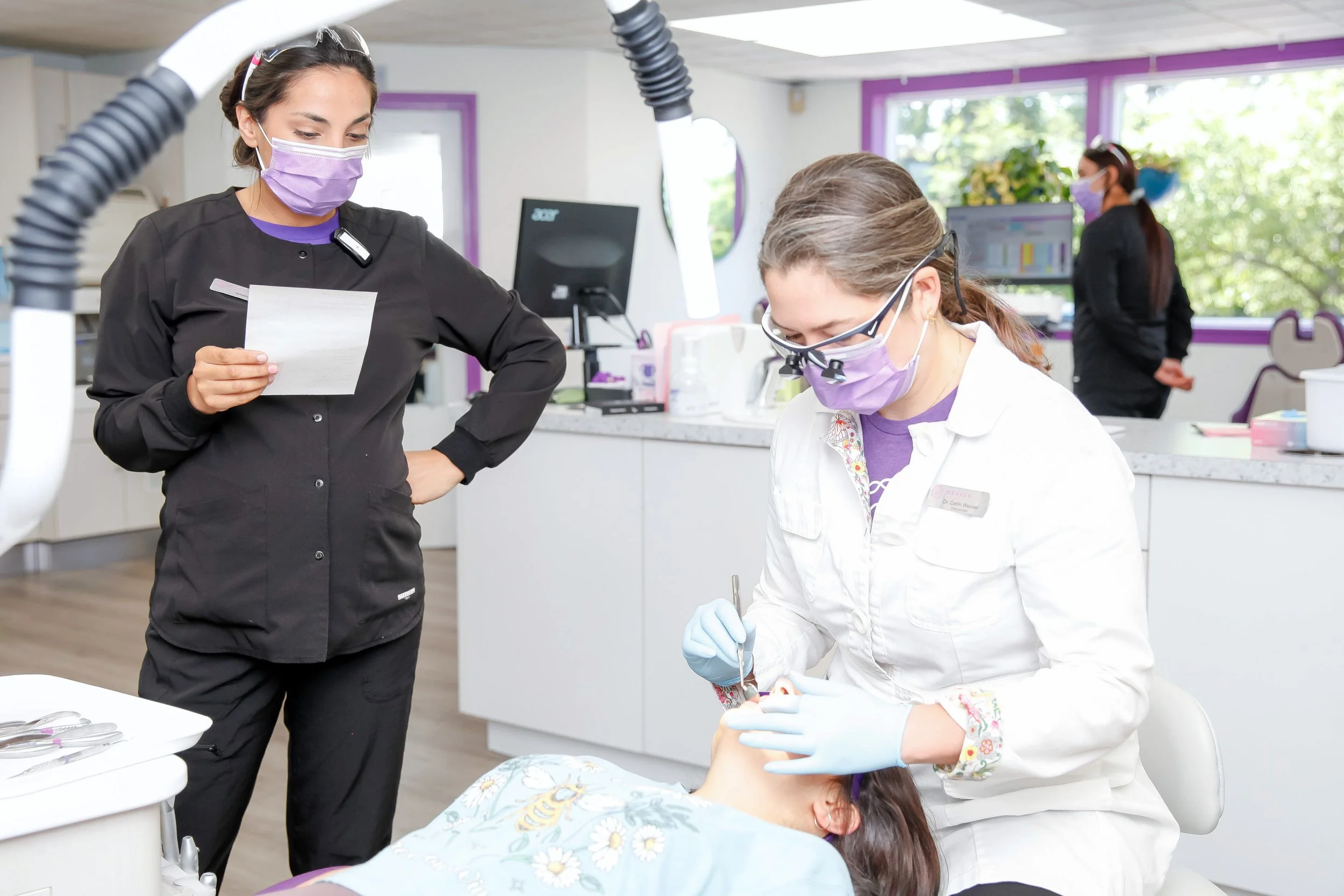Braces Rubber Bands? They’ll Help Make a Gorgeous Smile!
Braces do a great job straightening teeth and realigning your bite, but sometimes, they can’t do it alone. Orthodontists use different tools before and during braces treatment to recreate your smile. This includes the use of rubber bands for braces.
What do rubber bands do for braces? How are these orthodontic elastic bands different from regular rubber bands? How long will you have to wear braces and rubber bands?
Weaver Orthodontics uses rubber bands for braces to realign teeth and jaws and give you a beautiful and functional smile. Misaligned teeth and jaws can lead to other health problems, which we want you to avoid.
What Are the Elastic Bands on Braces?
There are two types of elastics for braces. Small orthodontic elastic bands are stiff and hard to stretch. Slightly larger bands are thinner elastic and can stretch between the jaws. What do elastic bands for braces do? Elastics are used in traditional braces to hold the archwire to the braces brackets.
The rubber bands for braces we use to realign the jaws can be placed by you instead of just by us, like orthodontic elastics. We give you rubber bands to move your teeth and jaws a certain way so they line up properly.
What Do Rubber Bands Do for Braces?
So, what do these rubber bands for braces do? They apply additional pressure to help align your bite and effectively straighten your teeth.
Your upper molars are meant to rest atop and slightly outside your lower molars. They can grind your food properly without bumping and wearing each other down. You can also tell if the center line between your upper and lower central incisors correctly aligns your jaws. Those lines should line up with each other.
Braces can fix a slight shift in the alignment of your teeth, but larger shifts may need a little help. That’s where rubber bands come in. They provide that extra “oomph!” to the pressure your braces give to move your teeth and jaws to where they need to be.
What Are the Types of Rubber Bands?
Did you know there are several types of dental braces bands? Each type of rubber band has a different job to improve your smile.
You may think these rubber bands are no big deal, but you can use any rubber bands with braces, but that’s not the case! The elastic rubber for braces is specially made to be non-toxic and to have a certain strength to perform different tasks.
Braces rubber bands are divided into classes. Each class moves your teeth or jaws a certain way.
Class 1 Elastics: Class 1 rubber bands connect the upper first or second molar to the upper canine to close gaps between teeth.
Class 2 Elastics: Class 2 rubber bands connect the upper jaw back to the lower jaw. They are used to pull the upper teeth back and the lower jaw forward to repair overbites.
Class 3 Elastics: Class 3 rubber bands connect the lower teeth to the upper teeth to repair underbites by moving the bottom teeth back while pulling the upper teeth forward.
Some patients may only need one type of rubber band. Others may require two types. You may not need rubber bands at all. It all depends on the type and severity of your dental issues. During your first evaluation and treatment presentation, we’ll let you know whether you need rubber bands and what kinds you need.
What If I Swallow a Rubber Band?
What happens if a rubber band accidentally pops off the bracket hook and you swallow it? Don’t panic! The rubber bands are small and nontoxic. So if you accidentally swallow one, it should usually go through your digestive system and leave.
Patients with latex allergies do need to let us know about their allergy. We can prescribe non-latex rubber bands for you instead. They’re just as non-toxic and are latex-free, and they work just as well as regular rubber bands.
Does It Hurt to Wear Rubber Bands?
You may wonder if rubber bands hurt. They may make your mouth uncomfortable the first few days after using them. They are making your teeth move even more than they normally do!
The good news is the soreness should go away after a few days once you get used to wearing your new orthodontic rubber bands. In the meantime, you can rinse your mouth several times a day with warm salt water to reduce swelling and soreness. You can also take an over-the-counter painkiller as directed.
If your soreness persists, contact Weaver Orthodontics. We can examine you and possibly adjust your treatment.
FAQs About Rubber Bands for Braces
Here are a few things you should know about wearing braces and rubber bands and how to care for them.
-
Wear them as we prescribe, usually up to 22 hours a day.
-
We will show you where to place them. Pay attention and place them correctly, or you could move your teeth in the wrong direction!
-
Absolutely not! This could harm your teeth and slow your treatment time while we fix the problem.
-
No, you should remove them before eating. When you're out, carry a package of braces and elastics to replace your rubber bands after eating.
-
Contact us before this happens so we can get more to you and keep you from disrupting or slowing your treatment.
-
We recommend you use the ones we provide because they are of orthodontic quality and nontoxic. However, we cannot guarantee that with “off-brands.”
Braces Rubber Bands in Swampscott, MA
Elastics are an important part of orthodontic treatment. Wearing them as your orthodontist recommends is vital to getting the best results for your smile in the shortest time possible.
Are you ready for braces treatment in Swampscott, MA? Contact our office or schedule an appointment with Weaver Orthodontics. We’re happy to answer any questions about rubber bands or any other part of your braces treatment!






